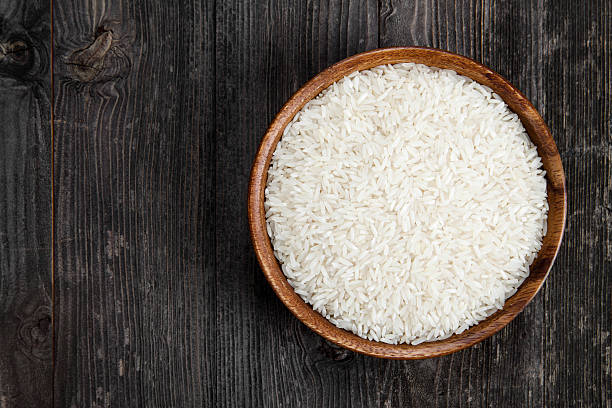Rice has been a staple food across the globe, mainly in the Asian continent. Rice is also known to be one of the most ancient cereals. Etymologically rice is derived from the old French word ‘ris’ which is derived from Greek word ‘Oruza’. Rice has a special place across he cultures of the world. Rice symbolizes purity, prosperity and spiritual sanctity. Rice is said to be grown as wild grass in once land mass called Gondwana land in around 10 million years ago, when the land mass split up into asia and Africa the rice also split up into Asian and African rice. The Indian wild rice varieties have been called as ‘Nivara’ in Sanskrit. According to Dr. Om Prakash, author of the book ‘Food and Drinks of Ancient India’ Rice is not mentioned in Rig Veda but in Yajur Veda there are five varieties mentioned. In the ‘Brhadaranyaka Upanishad’ rice is mentioned to be cooked in water or milk. Rice is also said to be eaten with curd, sesame, ghee, ‘Mung Beans’ and ‘meat’. There are mentions of parched rice as well as chipped rice, known as Prthuka’ or ‘chivda’ in the ancient texts. In the ancient texts the summer rice was called ‘Grashmukha’ Or ‘Shashtika’, the rainy rice was called ‘Varshika’ and ‘Vrihi’, the Autumn rice was called ‘Sharada’, and the winter rice was called as ‘Haimanthaka’, ‘Hayavana’ or the highly praised ‘Shali’. The ‘Shali’ rice had three varieties ‘Raktashali’ or red in color, ‘Kalama Shali’ which was hard white in color and highly flavored, and then was the most exotic variety of ‘Shali’ rice, the ‘Mahashali’ found only in the Magadha region. This rice was large bean sized and possessing great aroma and shine.
Rice preparations in ancient India
There were many sweets and savory preparations made using rice in the ancient India. ‘Shusurta’, the father of surgery in ancient India, mentions ‘Vishyandaka’, ghee-fried rice to which milk and molasses making a medium thick liquidy preparation. ‘Utraika’ another preparation of similar kind was made using rice flour. ‘Pupalika’ a cake of rice flour was made, centered with honey or Mung Beans paste and cooked in ghee. The Charaka Samhita mentions of an aphrodisiac omelette made of crocodile eggs, rice flour which Is fried in ghee. The Manasollasa a 12th century text mentions rice preparations mixed with milk, fried in ghee, and coated in sugar to get ‘Kshira-Prakara’. Ordinary boiled rice would be elevated to feats by dressing it with pappads, crisp pumpkin peels, grated coconuts; lime juice, tamarind with asafetida cooked in oil, or roasted Urad Dal. In Kannada literature ‘Puri-Vilangayi’ is mentioned which is a roasted rice and Mung dal preparation that is spiced and flavored with camphor, then rolled into marble sized balls using rice flour and finally deep fried before serving. There is mention of another preparation where eggplant is fried with coarsely ground rice to which chopped onions are added and this is then filled in turmeric leaves. In the south India rice evolved to various foods like Iddli, Idi-Appam, varieties of pancakes, sweet preparation and much more.
Rice in rituals
The Chinese believe that if young women leave grains of rice on their plate , each rice grains will become acne scar on their future husbands face. The Japanese believe that soaking rice before cooking releases the life energy and grants the diner a more powerful soul. The emperor celebrates a ceremony that gives rice to Amaterasu, the Sun Goddess, symbolizing the salvation of mankind. In Indonesia the bride is chosen only if she can cook rice well.
Rice also took a significance place in Indian rituals and culture. Rice is used as ‘Ashtak’ in the rituals and worship of the gods. Raw rice is sprinkled to gods as a means of offering and worship, in the rituals sprinkling of rice marks as a means of blessing. In the wedding rituals rice is sprinkled as blessing of prosperity to the newly wed. Rice is also used as ‘Ahuti’ offering in the sacrificial fire. During Annaprashana or first feeding of the baby rice in form of Kheer is fed to the baby.
Story of
Rice is also synonymous with Anna or food; there is an interesting story of goddess Annapurna, Indian goddess of food. Once lord Shiva and Parvati were playing dice and Shiva lost his trident, snake, and everything he possessed. And feeling humiliated went to meet lord Vishnu, who said that it was lord Vishnu explained why things were not working for lord Shiva and asked to play the game again, now lord Shiva started winning back everything. Goddess Parvati perceived lord Shiva to be cheating and in anger disappeared from there. Her disappearance led the nature to a standstill and scarcity of food, infertile land and drought and famine condition. The gods and humans prayed to goddess to be merciful, being compassionate goddess started distributing food in Kashi realizing his mistake even Shiva appeared there with his begging bowl and goddess gave him alms, in form of grains of rice. Since then goddess Parvati is worshipped as goddess Annapurna.
Rice you are priceless, hope you never run out and always bless the world with your abundance.


